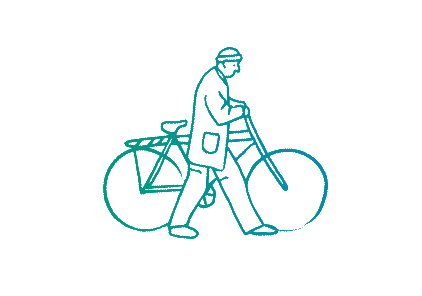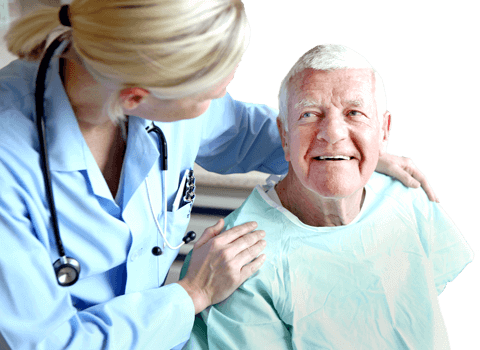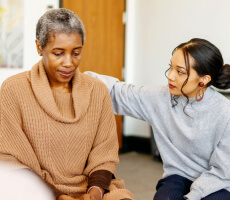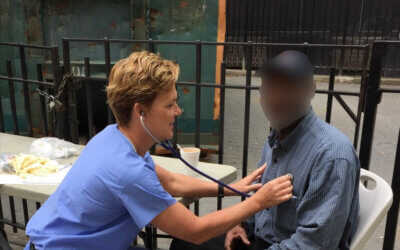Pain Relief: How Different Types Are Treated
The Regional Director of Chapters Health Hospice in north central Florida details the different types of pain and how they are treated by medical professionals and caregivers.

Pain relief is a complex process. There are different types of pain and the methods to alleviate them vary. The most common types are chronic pain and acute pain, with chronic pain being more prevalent. Recent data collected by the Centers for Disease Control (CDC) show more than 20 percent of Americans (50 million) suffer from chronic pain while eight percent (19.6 million) suffer from acute pain. But how is chronic pain and acute pain different? How do you get relief? What about the different, lesser-known types of pain that come with advancing neurological illnesses? And what are the facts when it comes to pain relief with opioids?
To answer those questions, I visited with Michele Sandoval. She is a Regional Director with Chapters Health Hospice in north central Florida and a registered nurse with almost ten years of experience treating chronic illnesses in the hospice space.
Types of Pain
Chronic pain
This type of pain persists for a long period of time or occurs with a chronic health condition. “We seen chronic pain in many diagnoses,” said Sandoval. “Cancer, liver disease, end stage kidney disease and neurological pain can be caused by the disease process itself.”
Acute Pain
Acute Pain is pain that occurs suddenly and usually the cause is specific, such as an injury or medical procedure. The pain lasts for shorter periods of time (days to weeks).
Neuropathic Pain
Now we’re getting into the less common types of pain. Neuropathic is less common than chronic and acute pain. It’s a result of damage to the nervous system. “It can feel like a stabbing, burning or prickling sensation,” said Sandoval. “We see this type of pain in neurological conditions such as Parkinson’s disease and Amyotrophic Lateral Sclerosis (ALS).”
Nociceptive Pain
Nociceptive pain often falls under the category of acute pain but can last for short periods of time. This type of pain typically originates from external injuries such broken bones, bruises, cuts. Pain related to the breakdown of issues is also classified as nociceptive pain. Arthritis is a key example.
Pain Relief
Relieving Chronic Pain
In non-cancer diagnoses, chronic pain can be initially treated with acetaminophen and non-steroidal anti-inflammatory medications like Tylenol and ibuprofen if the pain is minor. As the pain worsens, care teams may administer Tramadol and very low dose opioids, such as codeine or hydrocodone. As the disease progresses and pain becomes less manageable, stronger opioids such as morphine and oxycodone can be prescribed until the pain is managed. However, Sandoval said the disease progression may not be the only factor at play.
“Psychological and social factors can influence chronic pain. There are times when the physician will add an anxiety-reducing medication or an anti-depressant. Many times, anxiety and depression symptoms can worsen chronic pain.”
Sandoval said it’s also the responsibility of hospice staff to educate patients on different, non-pharmaceutical ways to relieve pain and to identify non-physical types of pain.
“Chronic pain can include social, spiritual and psychological pain. Playing music, aromatherapy and prayer are effective in managing pain in these cases. Repositioning immobile patients to avoid pressure and applying heat and ice is also an option if approved by the physician.”
Relieving Acute Pain
Treating acute pain depends on the cause of the pain. Non-steroidal anti-inflammatory medications are the first line of treatments. Applying ice and heat can reduce swelling and pain.
Relieving Neuropathic Pain
With neuropathic pain, some anti-seizure drugs such as Gabapentin or Lyrica can reduce cellular impulses and reduce pain as a result. According to the Cleveland Clinic, some over-the-counter topical treatments such as lidocaine or capsaicin creams and patches can be used on painful areas to reduce pain.
Relieving Nociceptive Pain
Non-steroidal anti-inflammatory drugs, such as ibuprofen, are the first treatments you should try. “If the pain worsens or increases, we would follow with a mild opioid medication,” said Sandoval. More complex treatments such as physical therapy and nerve blocking procedures can also be effective but are typically less common and less frequent in the hospice space.
Pain Relief with Opioids
There are many misconceptions and myths surrounding palliative medicine and hospice care. A prominent misconception is how care teams administer opioids in those settings. Many believe care teams rush to use them, leaving patients “doped up.”
Sandoval set the record straight.
“While there are certainly risks associated with their use, the benefits are great when used appropriately.”
Many healthcare professionals focused on end-of-life care agree with Sandoval’s suggestion. Dr. Andrea Enzinger, M.D. of the Dana-Farber Cancer Institute, contributed the following quote in an article from the National Cancer Institute, which focused on decreased opioid prescriptions for advanced cancer patients:
“We hear people with very advanced disease say, ‘I’m terrified of becoming addicted,’” said Dr. Enzinger. “But that’s such a rare problem in this population, it really shouldn’t be weighing into the decisions about pain management.”
And depending on a patient’s condition, those “decisions” Dr. Enzinger mentioned don’t always include opioids, even in hospice care.
“There are many non-opioid medications that can be used to treat the pain initially,” Sandoval added. “Meditation, music therapy, massage, aromatherapy and prayer can all decrease pain symptoms. These interventions can be used alone or after pain medication to help reduce pain.”
If there is one thing you should take away, it is this. There are many kinds of pain, but there are also many kinds of effective treatments. It’s not one medication fits all.
Chapters Health System is committed to serving the needs of its patients, families, caregivers, health providers, partners, and communities.
For more information, please call our helpful Chapters Health and HospiceHelp24® team at 1.866.204.8611 or Contact Us.
Keep Exploring
















